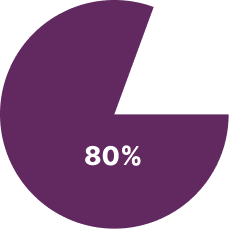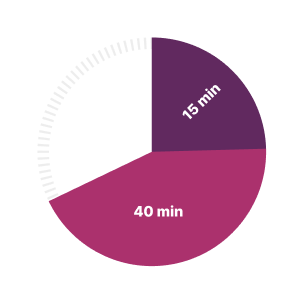QA Metrics¶
Measurithe Effectiveness of Software Testing with QA Metrics: Definitions, Types, Formulas & Examples¶
In the world of software development, quality assurance is paramount. Software testing is an essential process in the software development life cycle (SDLC). It helps to identify defects , improve quality, and ensure that the software meets the end-users' requirements. Quality assurance (QA) metrics play a crucial role in measuring the effectiveness of the testing process. QA metrics provide insights into the testing process and help to identify areas for improvement.
In this article, we will discuss QA metrics in software testing, their definitions, types, formulas, and examples.

Definition of QA Metrics¶
QA metrics are a set of quantitative measurements used to assess the effectiveness of the software testing process. QA metrics help to identify the strengths and weaknesses of the testing process and provide insights into the quality of the software. QA metrics can be used to measure different aspects of the testing process, including test coverage, defect density, test execution time, and test efficiency.
Types of QA Metrics¶
There are different types of QA metrics that can be used to measure the effectiveness of the testing process. Some of the most commonly used QA metrics include:
A) Test Coverage: Test coverage measures the percentage of your codebase tested by your test cases. It ensures that all critical functionalities are tested, reducing the risk of undiscovered defects.

B) Defect Density: This metric assesses the quality of your code by measuring the number of defects per lines of code or function points. It helps identify areas that need improvement and provides a baseline for future projects.

C) Test Execution Time: Test execution time metrics measure the time taken to execute tests. Test execution time metrics help to identify the tests that take longer to execute. This metric assesses the time it takes to run a set of test cases, helping you optimize testing cycles.

D) Test Efficiency: Test efficiency metrics measure the number of tests executed per unit of time. Test efficiency metrics help to identify the tests that are taking longer to execute.

E) Defect Leakage: Defect leakage metrics measure the number of defects that are found after the software is released. Defect leakage metrics help to identify the areas of the software that need improvement.

F) Test Case Effectiveness: This metric evaluates the efficiency of your test cases by measuring the number of defects they uncover. It helps you fine-tune your test suite for maximum impact.

G) Test Case Pass Rate: It indicates the percentage of test cases that pass successfully. Monitoring this metric helps you track progress and identify persistent issues.

H) Mean Time to Detect (MTTD) and Mean Time to Resolve (MTTR): MTTD measures how quickly you detect defects, hile MTTR measures how swiftly you resolve them. Reducing these times enhances your testing process's efficiency.

I) Test Environment Stability: This metric assesses the reliability of your test environment. Frequent environment issues can disrupt testing, leading to delays.

Formulas for QA Metrics¶
QA metrics are typically calculated using formulas. Here are some of the most commonly used formulas for QA metrics:
-
Test Coverage Formula: Test Coverage = (Number of Requirements Covered by Tests / Total Number of Requirements) * 100
-
Defect Density Formula: Defect Density = (Number of Defects / Size of Code) * 1000
-
Test Execution Time Formula: Test Execution Time = Total Time Taken to Execute Tests / Number of Tests Executed
-
Test Efficiency Formula: Test Efficiency = Number of Tests Executed / Total Time Taken to Execute Tests
-
Defect Leakage Formula: Defect Leakage = (Number of Defects Found after Release / Total Number of Defects) * 100
-
Test Case Effectiveness Formula: Test Case Effectiveness = (Number of Defects Uncovered by Tests / Total Number of Executed Test Cases) * 100
-
Test Case Pass Rate Formula: Test Case Pass Rate = (Number of Test Cases Passed / Total Number of Executed Test Cases) * 100
-
Mean Time to Detect (MTTD) and Mean Time to Resolve (MTTR): MTTD = Total Time Taken to Detect All Defects / Number of Defects Detected. MTTR = Total Time Taken to Resolve All Defects / Number of Defects Resolved
-
Test Environment Stability: Test Environment Stability = (Number of Successful Testing Sessions / Total Testing Sessions) * 100
Examples of QA Metrics¶
Here are some examples of how QA metrics can be used in software testing:
-
Test Coverage: If the total number of requirements for a project is 100 and the number of requirements covered by tests is 80, then the test coverage would be 80%.
-
Defect Density: If a project has 5000 lines of code and 25 defects are found, then the defect density would be 5 defects per 1000 lines of code.
-
Test Execution Time: If it takes 10 hours to execute 100 tests, then the test execution time would be 6 minutes per test.
-
Test Efficiency: If 500 tests are executed in 10 hours, then the test efficiency would be 50 tests per hour.
-
Defect Leakage: If 10 defects are found after the software is released, and the total number of defects is 100, then the defect leakage would be 10%.
-
Test Case Effectiveness: If out of 100 executed test cases, 20 defects are discovered, then the test case effectiveness would be 20%. This means 20% of the executed test cases were effective in uncovering defects.
-
Test Case Pass Rate: If you have a total of 200 test cases, and 180 of them pass successfully, then the test case pass rate would be 90%. This suggests that the majority of your test cases pass, indicating potential software stability.
-
Mean Time to Detect (MTTD) and Mean Time to Resolve (MTTR): MTTD: If over the course of a week, you detect 5 defects and the cumulative time from development to detection for these defects is 50 hours, then the average MTTD is 10 hours per defect. MTTR: If in the same week, the cumulative time taken to resolve these defects is 25 hours, then the average MTTR is 5 hours per defect.
-
Test Environment Stability: If you conduct 100 testing sessions in a month and experience disruptions in 5 of those sessions due to environment issues, then your test environment stability is 95%. This indicates that the environment was stable for most of the testing sessions.
Conclusion¶
QA metrics are an essential aspect of software testing. They help to measure the effectiveness of the testing process and provide insights into the quality of the software. Different types of QA metrics can be used to measure various aspects of the testing process, including test coverage, defect density, test execution time, test efficiency, and defect leakage. By tracking QA metrics, software development teams can identify areas for improvement, optimize their testing process, and ensure that their software meets the end-users' requirements.
However, it's important to remember that QA metrics should be used in conjunction with other testing methods and should not be the only means of measuring the quality of software.
Additionally, QA metrics should be tracked consistently over time to identify trends and patterns in the testing process. In conclusion, QA metrics are an important tool for measuring the effectiveness of software testing.
They help to ensure that the software is of high quality, meets the end-users' requirements, and is delivered on time and within budget. By tracking and analyzing QA metrics, software development teams can continually improve their testing process and deliver better software products.